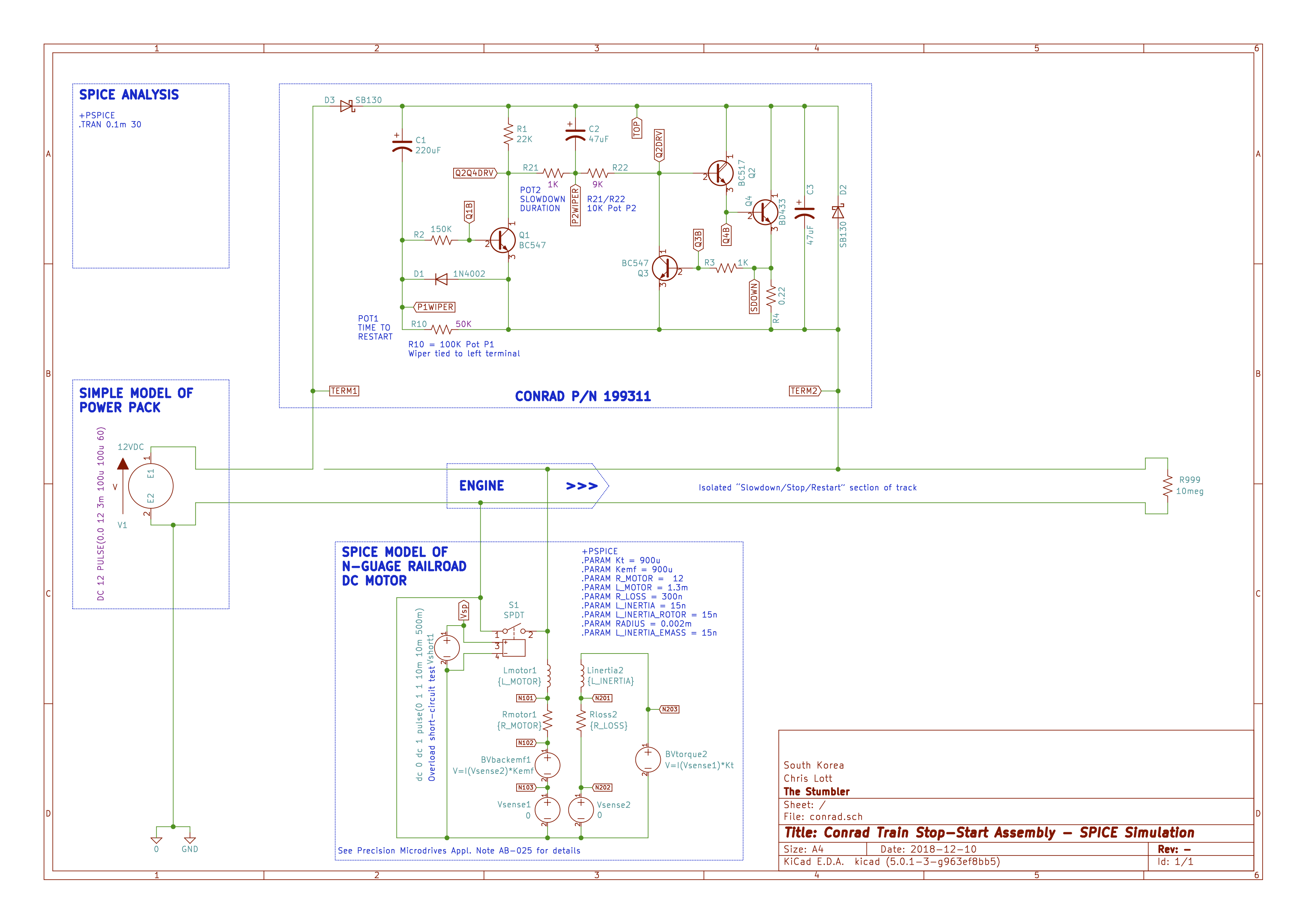Here is the Kicad schematic again, drawn for Spice analysis.
 Spice Schematic
Spice Schematic
So, the first question was what version of SPICE to use.
For the last serious SPICE simulation I did some years ago, I used Beige Bag Software’s B2.Spice A/S. I still have that, but it is a Windows program and everything I’m working on these days is Mac or Linux. So I sought out another solution. No problem, there are still a lot of options:
I started off trying to use the latest version of Kicad 5.0 which has new and improved interface with SPICE (ngspice, specifically). That turned out to be quite a struggle. Several times along the way I gave up on Kicad/NgSpice and tried several of the other products. Every one had it’s own quirks, and I kept returning to the Kicad approach. While still a little buggy, it was actually very well integrated and held promise for ease of use in the future.
This isn’t going to be a how-to, but here are some of the issues I fought:
- General setup of schematic for SPICE simulation see here and here
- Diodes pins had to be swapped see this topic
- Adding SPICE parts that don’t exist see this topic
- Part model format differences (between different flavors of SPICE)
Ultimately I was pleased with the Kicad / SPICE setup.
Some Links for my future Reference
- ngspice manual v26
- pspice format
- pspice format help
- Kicad/eeschema manual
- LTSpice Reference
- Model RR Brushed DC Motor History
- Modeling DC Motor in LTSPICE
- Example Model RR Motor Controllers